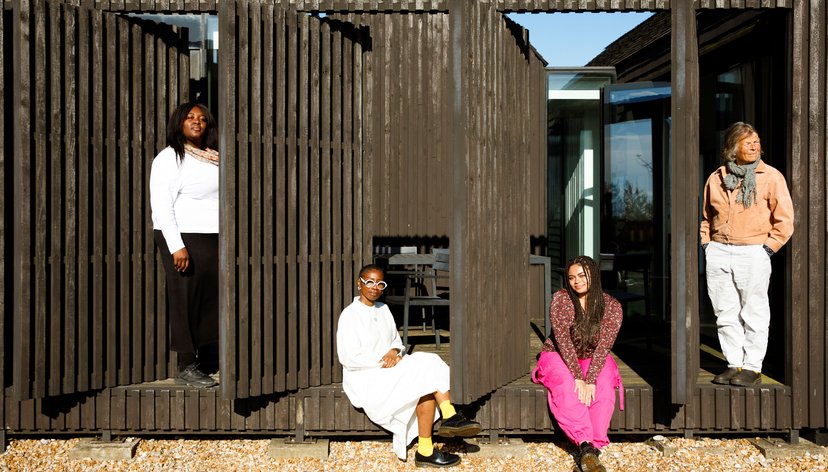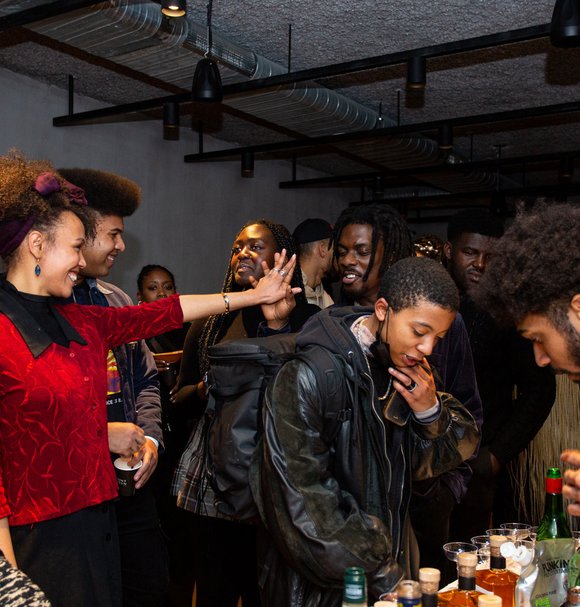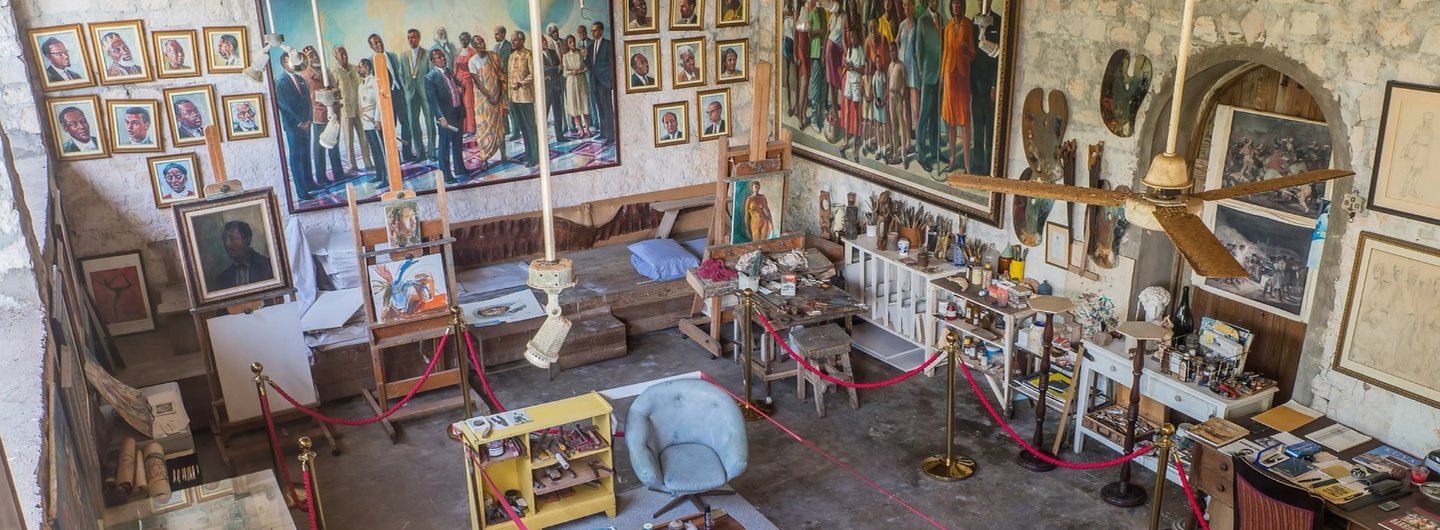
Key details
Date
- 16 October 2025
Read time
- 8 minutes
A pioneer of post-Independence art, Barrington Watson broke barriers at the RCA and dedicated his life to nurturing the next generation of artists.
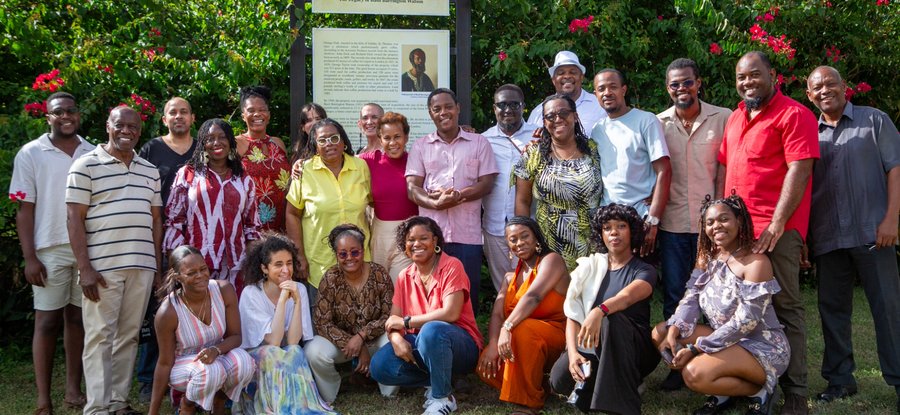
Born in Kingston, Jamaica, Barrington Watson spent much of his life capturing the spirit and stories of his homeland, becoming one of the most influential post-Independence artists of his generation. But Watson was not only a pioneering painter; he was also the first Black student to study at the Royal College of Art. It’s a milestone that is both cause for celebration (one Watson himself took great pride in) and a moment of reflection, given that the College had already been open for more than a century before his arrival. Today, his legacy continues to resonate across the institution; inspiring the next generation of students and staff, and shaping conversations around representation and art education.
The artists’ great talent is evident in the hundreds of paintings he produced over the years, but Watson firmly believed that raw skill could only get one so far. He playfully referred to the hard graft required to become one of the greats as “99% sweat”, meaning that relying on his artistic gift (which was clear from an early age) was out of the question. He knew that formal training at art school was essential if he was to progress as he knew he could.
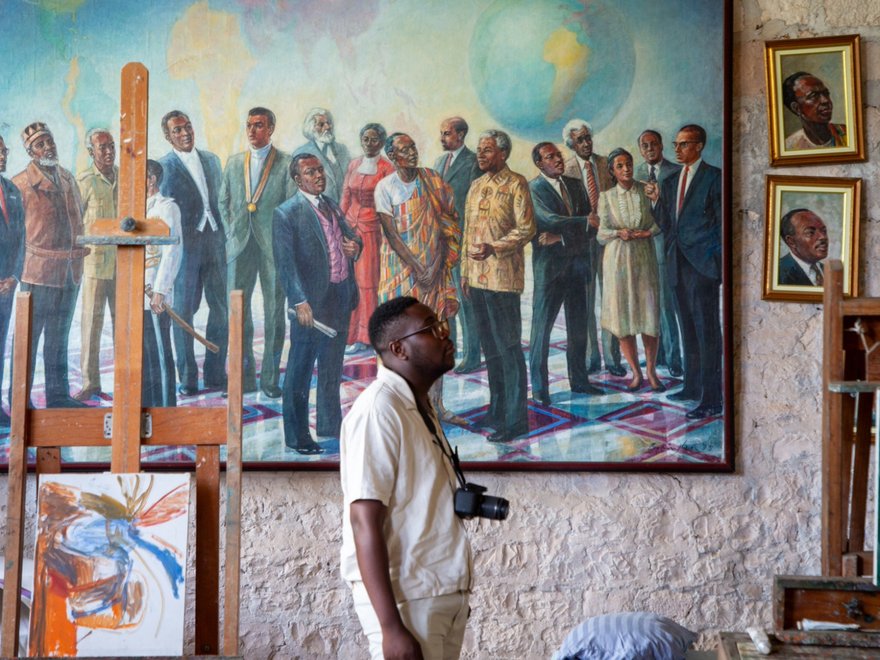
An RCA BLK member stands in Barrington Watson's studio as part of the Creative Futures event
“When I left school I had chosen to become an artist but my father said: ‘No that will not be.’ Because of the idea that art is for time wasters,” Watson said in an interview to the Caribbean Broadcasting Union before his death in 2016. “But when I left school my focus was to get out of here, get to England and find an art school to study art. So I worked at a few places, saved up enough money to get on a boat—a banana boat—and I spent 17 days at sea until I got to England.”
After a rocky start (he was informed on arrival that a young Jamaican friend he was supposed to stay with had passed away), he “looked at life” and got himself on his feet independently. Within a week he had found a place to live and got a few different jobs, all the while keeping his goal of studying art as the focus. He soon made contacts in the creative fields and was recommended to apply for the Royal College of Art, after showing his work to a tutor there.
Watson arrived at the College’s office without a scholarship confirmed, but such was the standard of his portfolio that the administrator told him on the spot: “I'm going to put pen to paper. And I'm not going to ask, I'm going to tell the Jamaican Ministry of Culture that this is a must.” The British Council supported his studies for the first year of his Painting MA, and then the Jamaican government then stepped in for the following two years.
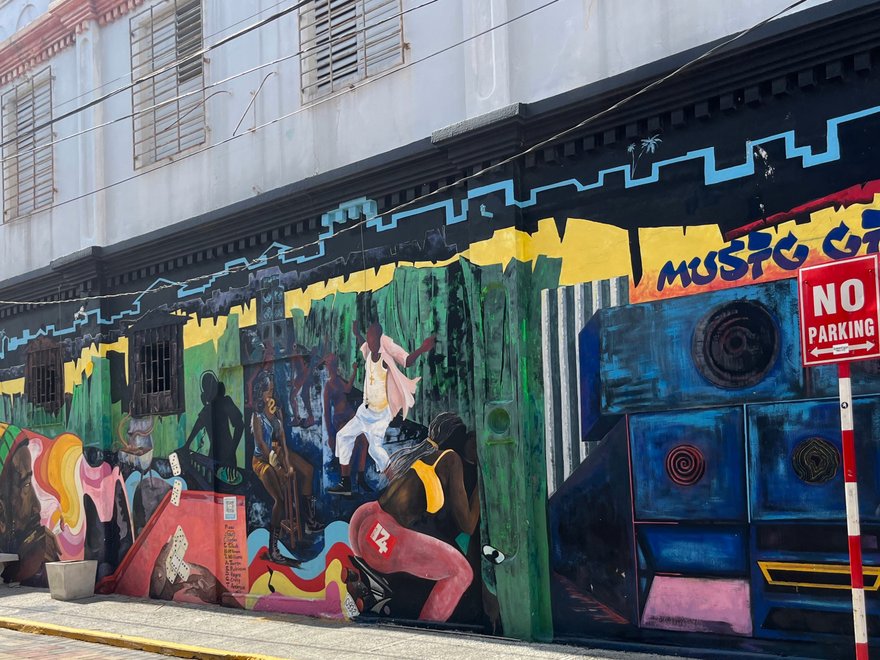
A mural celebrating in the creatives of Kingston, Jamaica, where Barrington Watson was born.
The artist’s determination and self belief carried him through the challenges he faced as a Black man newly arrived in England in the 1950s. According to his widow, Mrs Doreen Watson, he took his studies at the RCA very seriously and was entirely focused on learning as much as he could. This meant that socialising with his contemporaries took a backseat: “He went there on one mission and kept himself to himself,” she says. “But by the last term he felt he could loosen up and that's when he started to talk, and was friendly with everybody.”
And while Watson knew he had to come to London to refine his craft, he knew with equal certainty that he would return to Jamaica and bring his knowledge home. “For several reasons: I wanted my father to understand that art as a profession was as good as a doctor,” Watson said in an interview. “And two: I didn’t understand why art wasn’t on the curriculum in schools [in Jamaica] and why people weren’t taught to have a career in art. I wanted to correct that.”
After further training at the Académie de la Grande Chaumière in Paris, the Rijksacademie in Amsterdam, and several other leading European art schools — all attended on scholarships — Watson returned to the Caribbean to begin his career. His first post was at the University of the West Indies, where he taught art appreciation to teachers. Soon after, he was invited to establish the Jamaica School of Art. It was no easy task: there were significant barriers to change, set against the backdrop of intense political tension in the years leading up to Jamaica’s independence in 1962. Yet Watson remained determined to demonstrate the importance of a dedicated art school to nurture and develop local talent.
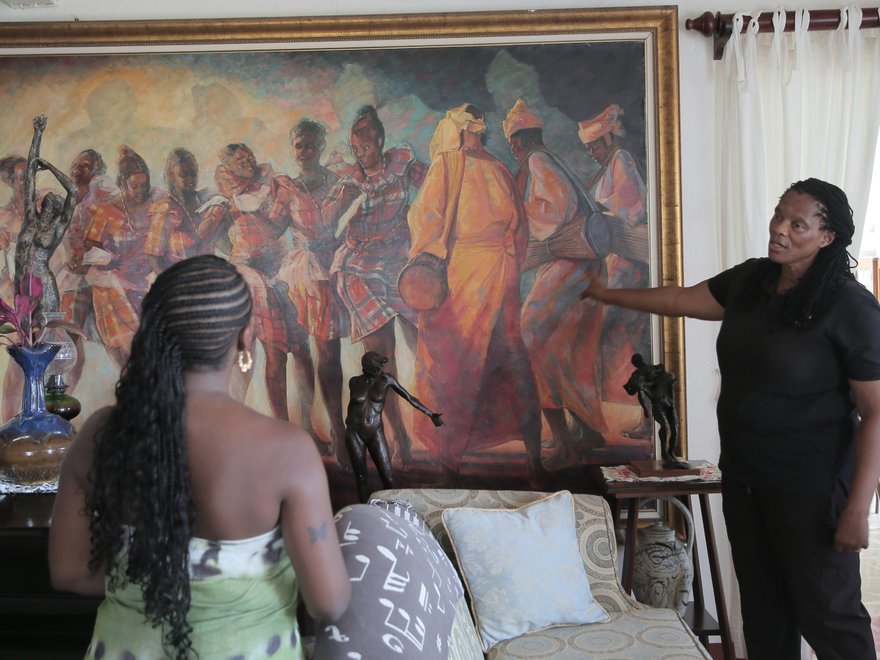
An RCA BLK member is given a tour of Barrington Watson's home on Orange Park estate in Jamaica
Watson’s dedication to helping the next generation would become a central part of his life as an artist. “He used to have young artists come to him just to have their work critiqued, or to say, ‘I’m having a challenge with this area — what do you think? Guide me through it.’ People would turn up at his house seeking that guidance,” says Mrs Watson. Initially this happened in his studio in Kingston but the more well-known he became, the more difficult this ‘open-house’ policy became, prompting the move to his final residence at Orange Park Great House. Nestled in the hills of St Thomas Parish, with the Blue Mountains on one side and the ocean stretching out across the other, it became a haven for Watson to continue his prolific output.
Following Watson’s death in 2016, his widow Mrs Doreen Watson now oversees Orange Park as a space for creative inspiration and artist residencies, extending the painter’s spirit of self-discovery and artistic excellence to a new generation of creatives. “Over the years, we realised how many artists came here for information or inspiration. Even at his age, he would still go into his studio every day and work — and seeing that dedication made a huge difference to people,” she explains. “When they found themselves lacking, they’d turn up, have lunch with him, talk, and then call back to say, ‘Oh, it makes such a difference — I’m back in my studio, going full speed.’ He decided that this place, this home, should be somewhere artists and art lovers can come and truly enjoy. So in 1991, he gave it to the people of Jamaica.”
It is in this spirit that Orange Park continues to welcome artists from around the world. One such residency took place this summer, organised by The Royal College of Art Association of Black Students, Alumni & Friends (RCA BLK). Fifteen years on, it has become an essential and transformative platform for Black students, alumni, and staff at the RCA. As a grassroots organisation, funded and staffed by the RCA since 2022, it is uniquely positioned to drive change from within, advocating for a more inclusive environment and providing tailored support to Black creatives.
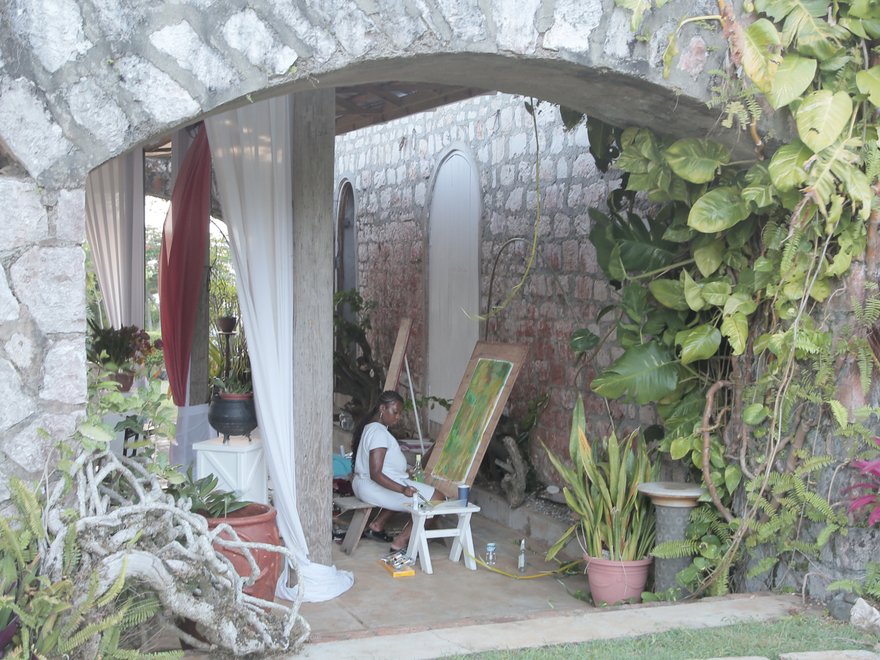
Shannon Bono painting during the Orange Park artist residency
The residency was attended by Emily Moore, Chair and co-founder of RCA BLK, and has shared history with Watson as a fellow Painting MA graduate and a granddaughter of the Jamaican Windrush generation, born in London, UK. "My connection to his legacy runs through these intertwined histories of art, migration, and identity,” says Moore. “Travelling to Orange Park and immersing myself in the richness of his life and legacy felt like a natural and necessary continuation of that dialogue — one that bridges past and present, and celebrates the enduring creative spirit of our shared heritage.”
Shannon Bono (Painting MA, 2024) and Bashiru Lawal-Shardow (Service Design MA,2024) both joined Moore on the residency and felt deeply impacted by their time there. For Lawal-Shardow, it was particularly enriching to spend time in Watson's library. “It gave me an insight into him through what he read,” he says. “Reading the books on someone’s shelf tells you a lot about where someone’s mind was at.” Bono, meanwhile, took inspiration from being immersed in the estate’s beautiful gardens. “I was painting a lot of the plants and flowers on the grounds. Hearing about how beneficial they are to the body, and their possible spiritual connections, really stayed with me,” she said.
During the residency, the artists spent time researching and creating work at Orange Park, as well as meeting local artists, taking tours of studios and galleries, and visiting key cultural sites in Jamaica, where Watson was born. There was also a one-day ‘Creative Futures’ event hosted by RCA BLK at Orange Park, where Jamaican creative practitioners, many of whom were current or former students of Edna Manley College, engaged in spirited conversation about the direction of the Jamaican art scene, and the lives of the artists within it. There were also portfolio reviews led by the RCA BLK team. The event concluded with speeches from Ms Doreen Watson and a trustee for Orange Park, who remarked that Barrington’s dream of having artists convene on the land had finally come to pass.
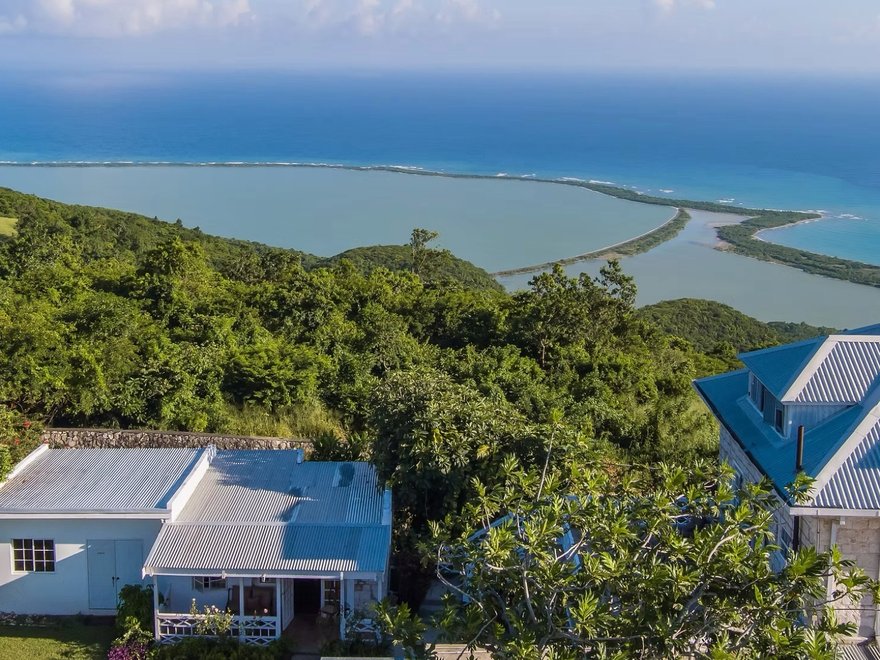
View of the ocean from Barrington Watson's Orange Park estate in Jamaica
The artists were invited to make Orange Park their home during the weeks they were there and Moore and Bono were offered Watson's studio to paint in. But while Bono found it a powerful place to observe, she also felt that to create work there would be an interruption of a space that was sacred to the late painter. “As an artist, I know that even if a space doesn’t look tidy, everything is placed exactly where it needs to be. This was his setup, his energy. I didn’t want to interrupt that,” she explains. “So I spoke to the room and said, ‘Barrington, I get it—I don’t need to work here.’ and just decided to work outside my cottage instead.”
Lawal-Shardow keenly feels the importance of the creative community that Watson was nurturing there many years ago, and of the duty he and his contemporaries have to continue the job that Watson began. “There’s going to be a next generation of [Black] artists who may not even feel comfortable going into galleries in Mayfair,” he says. “So we need to ask: What’s our role in being of service to the gift that is art? In helping people articulate the world around them and how they feel about it? We all have a role to play, and I feel like Barrington was one of the first to lead.”
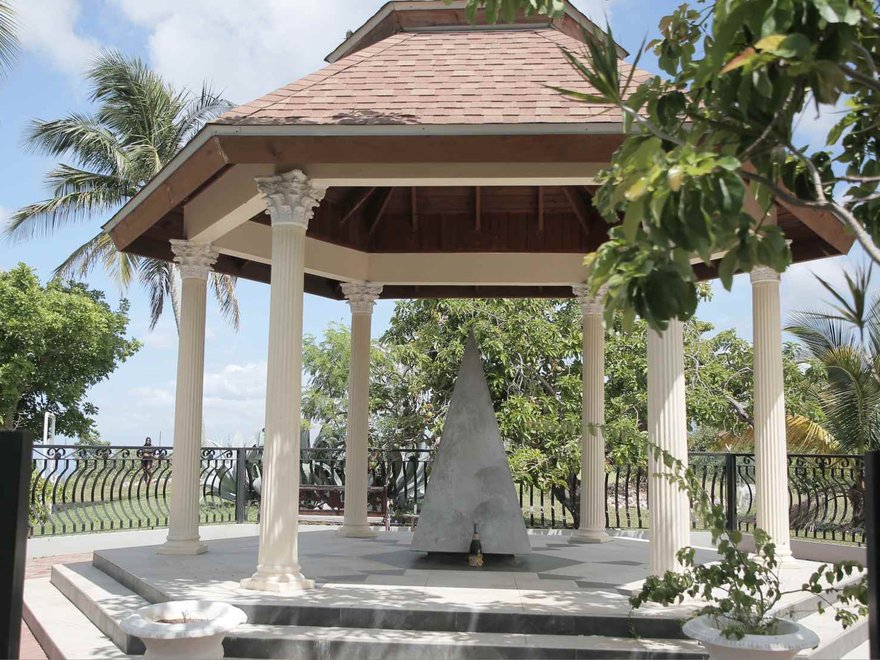
Memorial and final resting place of Barrington Watson
Reflecting on Watson’s legacy, Bono spoke about the importance of both progress and remembrance; expanding the RCA network while “reaching back” to those who paved the way. “Someone like Barrington did this at a much harder time,” she said, “even though there’s still a way to go now, which is why groups like RCA Black exist.” For her, honouring Watson’s legacy means more than simply acknowledging his achievements; it’s about learning from his journey and adding that knowledge to the collective archive. “He brought his knowledge back to his country, showed Jamaica and his community that you can be in the creative industry, you can be an artist, and you can build this space that opens people’s eyes and expands their minds about what’s possible.”
As she put it, Watson is now “an ancestor,” and connecting with that lineage is both grounding and galvanising for current and future RCA students and alumni. His example—returning home to create opportunities for younger creatives and remaining impactful decades later—offers a blueprint for what’s possible today. “It reminds you that the sky’s the limit,” she said. “Even in an industry where we still deal with issues of race and class, it’s possible — and we have examples of that.”
